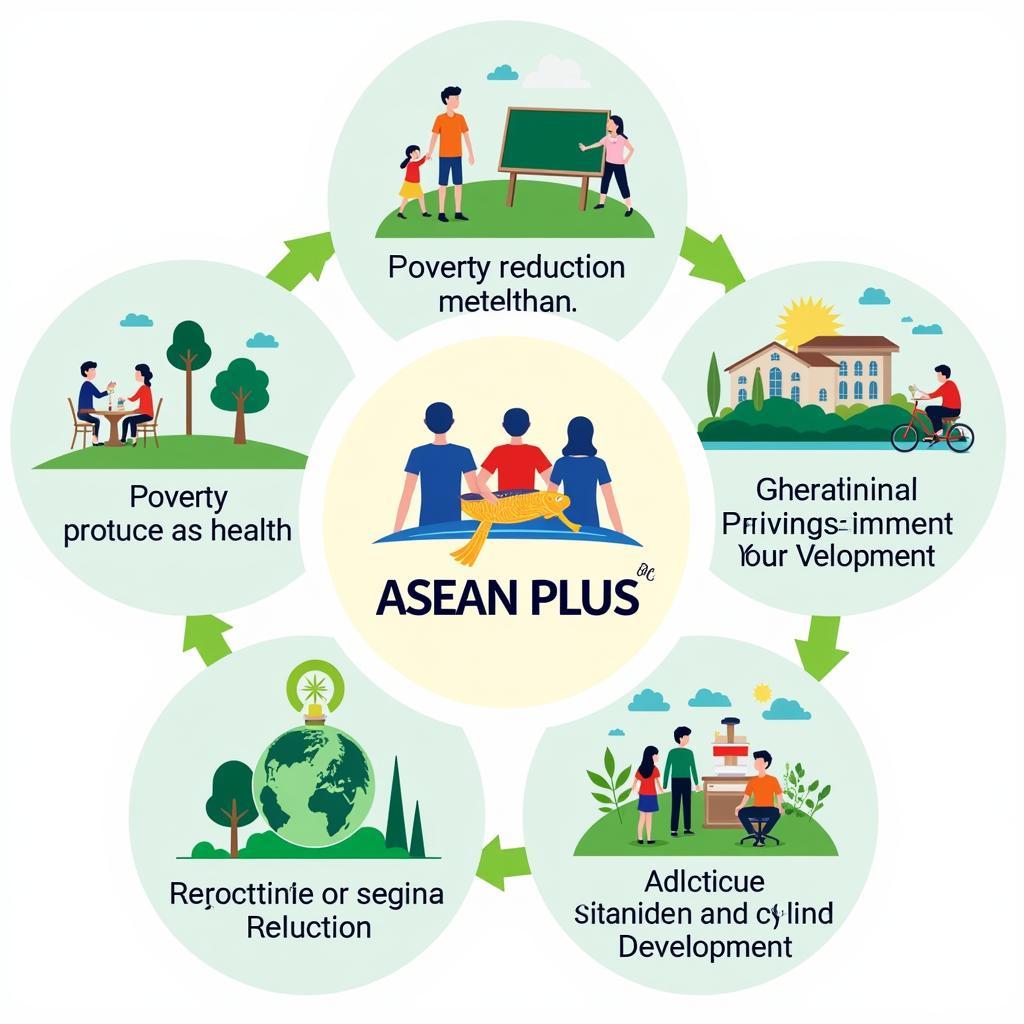The Asean Plus framework, established in 1999, signifies a crucial step towards enhanced regional cooperation and integration in Southeast Asia. By encompassing the ten member states of the Association of Southeast Asian Nations (ASEAN) along with China, Japan, and South Korea, ASEAN Plus aims to foster dialogue, collaboration, and mutual understanding across a range of areas of common interest.
The Genesis and Evolution of ASEAN Plus
The origins of ASEAN Plus can be traced back to the aftermath of the Asian financial crisis of 1997-1998, which underscored the need for greater regional economic cooperation and financial stability. In response to this crisis, ASEAN leaders initiated dialogue with their counterparts from China, Japan, and South Korea, leading to the inaugural ASEAN Plus Three (APT) Summit in 1999.
The APT framework has since become a cornerstone of regional architecture in East Asia, serving as a platform for high-level dialogue and practical cooperation on a wide range of issues. These include financial stability, trade and investment, food security, energy cooperation, and combating transnational crime.
Expanding Horizons: From ASEAN Plus Three to Other Dialogues
Building upon the success of the APT framework, ASEAN has progressively expanded its network of partnerships through other “ASEAN Plus” dialogues. These include ASEAN Plus One, which involves engagement with individual dialogue partners, and ASEAN Plus Six, encompassing all APT countries as well as India, Australia, and New Zealand.
These expanded dialogue mechanisms reflect the growing interconnectedness between Southeast Asia and the broader Asia-Pacific region. They provide a framework for addressing shared challenges, promoting regional stability, and harnessing the collective potential of these dynamic economies.
Key Areas of Cooperation within ASEAN Plus
ASEAN Plus frameworks have facilitated substantial progress in various areas of cooperation, contributing to regional peace, stability, and prosperity.
Economic Cooperation and Integration
One of the primary focuses of ASEAN Plus has been enhancing economic cooperation and integration. The APT, for instance, played a crucial role in establishing the Chiang Mai Initiative, a multilateral currency swap arrangement aimed at addressing short-term liquidity difficulties and bolstering regional financial stability.
Furthermore, ASEAN Plus frameworks have facilitated trade and investment liberalization through various agreements and initiatives. These efforts have contributed to the region’s remarkable economic growth and development.
Political and Security Cooperation
In addition to economic cooperation, ASEAN Plus dialogues have fostered political and security cooperation among member states. This includes dialogue and cooperation on transnational issues such as terrorism, piracy, and natural disaster response.
By providing a platform for dialogue and confidence-building measures, ASEAN Plus frameworks contribute to managing tensions and promoting peaceful resolution of disputes in the region.
Challenges and Opportunities for ASEAN Plus
While ASEAN Plus frameworks have achieved significant progress, they also face challenges in navigating complex geopolitical dynamics and ensuring equitable distribution of benefits.
Addressing the Development Gap
One key challenge is addressing the development gap between ASEAN member states and the Plus countries. Bridging this gap through inclusive development strategies and targeted assistance is crucial for ensuring the sustainability and effectiveness of ASEAN Plus cooperation.
 ASEAN Plus Sustainable Development Goals
ASEAN Plus Sustainable Development Goals
Managing Geopolitical Tensions
Another challenge stems from the evolving geopolitical landscape and potential for competition among major powers within the ASEAN Plus framework. Maintaining ASEAN centrality and a rules-based regional order is paramount to ensuring that ASEAN Plus remains a platform for cooperation rather than rivalry.
Despite these challenges, ASEAN Plus frameworks present significant opportunities for continued progress. Deeper integration, innovation-driven growth, and collaborative solutions to global challenges such as climate change and pandemics are just a few areas where ASEAN Plus can make a meaningful difference.
Conclusion: ASEAN Plus – A Catalyst for a Shared Future
ASEAN Plus represents a testament to the spirit of cooperation and shared aspirations for peace and prosperity in the Asia-Pacific region. By strengthening existing mechanisms, addressing challenges, and capitalizing on emerging opportunities, ASEAN Plus can continue to play a vital role in shaping a more integrated, resilient, and prosperous future for Southeast Asia and beyond.
FAQs about ASEAN Plus
1. What is the main difference between ASEAN and ASEAN Plus?
ASEAN refers to the Association of Southeast Asian Nations, a regional bloc of 10 member states. ASEAN Plus encompasses various frameworks where ASEAN engages with external partners like China, Japan, and South Korea (ASEAN Plus Three), or other countries (ASEAN Plus One, ASEAN Plus Six).
2. What are the key objectives of ASEAN Plus Three?
The ASEAN Plus Three framework aims to strengthen dialogue and cooperation between ASEAN and China, Japan, and South Korea in areas like finance, trade, food security, and transnational crime, ultimately contributing to regional peace and prosperity.
3. How does ASEAN Plus benefit its member states?
ASEAN Plus provides a platform for addressing shared challenges, promoting economic growth through integration and cooperation, enhancing regional stability through dialogue and confidence-building measures, and fostering people-to-people connections.
4. What are some examples of successful ASEAN Plus initiatives?
The Chiang Mai Initiative, a multilateral currency swap arrangement, and various trade and investment agreements facilitated through ASEAN Plus frameworks are examples of successful initiatives that have contributed to regional financial stability and economic growth.
5. What is the future outlook for ASEAN Plus cooperation?
Despite challenges, ASEAN Plus holds substantial potential for deepening integration, fostering innovation-driven growth, and tackling global issues like climate change and pandemics, signifying its crucial role in shaping a prosperous future for the region.
Need further information about ASEAN Plus? Explore more insights on these topics:
- 7 days asean plus pass
- 17th asean plus three summit
- Apa itu asean plus 3
- ASEAN Plus 3
- 5 importances of asean plus three to asean members
Still have questions? We’re here to assist you 24/7. Contact us at:
Phone: 0369020373
Email: aseanmediadirectory@gmail.com
Address: Thon Ngoc Lien, Hiep Hoa, Bac Giang, Vietnam.

